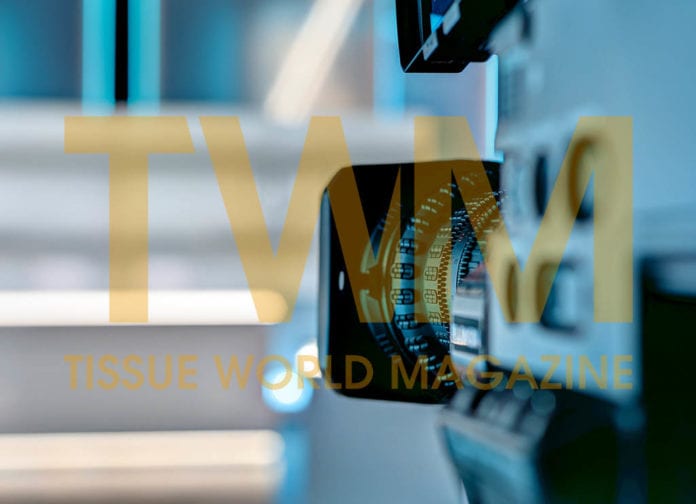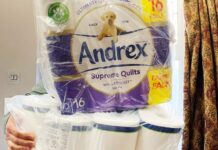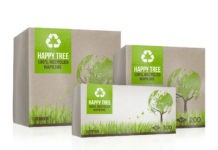By Soile Kilpi, director, Pöyry Management Consulting
The retail sector continues to go through a transition. Online shopping is just one of the catalysts. New retail stores are opened, some closed, repurposed for fulfilment
… and how does all this then relate to tissue products?
Moving on up…
The quality tiers in retail (At-Home) tissue products are well established: value, premium, ultra-premium. As with most other products, the trend for most people is to start with value and move up to premium, and then ultra-premium as your economic situation improves. This trend up the quality level is also supported by the idea of small comforts that people will tend to trade-up for or splurge on. Because economic conditions have been improving since the recession in 2008, this is exactly the scenario that
has played out in the US tissue market: premium and ultra-premium purchases have increased while value/economy have remained stagnant.
The US tissue market is approximately a 9.1m tonne market, with the retail portion accounting for around 70% of the total, or 6.2m tonnes. The ultra-premium and premium segments are almost the same size (slight edge to ultra-premium) at around 40% each of the total, leaving 20% for value/economy. In five years, the retail market is forecast to have grown at a rate of ~1%/year, overall. Both ultra-premium and premium tiers will experience volume growth, but the ultra-premium will be the only segment to grow share. The forecast is that it will then account for ~42% of the market, while premium treads water and value/ economy loses share.
If retail tissue is further split into branded, e.g. Bounty, Charmin, Angel Soft, and private label, e.g. store brands; the premiumisation trend is bigger in private labels than in brands. This is partially because private labels started as value/economy products and have only relatively recently been expanding into higher quality products, but it is
also because people see value in buying private label products. Although people want better quality products, they still want to feel that they are getting good “value” for their money. For the retailers, they have seen that there is a good opportunity to increase sales by offering a range of products, including the ultra-premiums. Sales of premium and ultra-premium private label tissue products are forecast to increase at a faster rate than brands Some forecasts have growth in premium private labels as high as 5-6% per year.
Continuous changes
Retail channels that have for the past five years sold most tissue products are grocery (1/3 of sales), mass merchandisers (1/4) and warehouse clubs (1/9) and these together account for nearly 70% of the sales. Dollar stores and discounters, although with a high number of stores, are usually smaller in size and therefore account for less tissue volume sales.
Changes are taking place in retailing and new stores are opened by e.g. discounters. As US shoppers increased their shopping trips to discount stores during the recession, many never returned to shopping at full-price stores… also because the quality levels with tissue private label improved! Examples are Aldi, Target, Dollar Tree, and Dollar General.
The latter is opening +900 new stores this year, remodelling and relocating stores as well. Other discounters like Dollar Tree and Family Dollar will open +600 new stores this year. These discounters can be considered disruptors … Moving even to New York City and taking share from bodegas, their core is to be very price competitive. In addition, Aldi and Lidl have introduced European style retailing with a high share of private labels.
Not only are new stores being opened, but new concepts are introduced. For example, Target is opening +30 new small format stores in urban and dense suburban areas and college campuses. Costco and Walmart keep growing and steadily expanding store footprint. The latter is opening a mix of Neighbourhood market stores and Supercentres. Somewhat surprisingly, Sam’s Club is closing 63 stores and interestingly converting a store or two to e-commerce fulfilment centres. Shift to digital shopping for bath tissue, paper towels and facial and napkins is gradually happening. In terms of e-commerce share of sales, it is estimated that 6-7% of bath tissue and paper towels are sold online.
Amazon moves a lot of volume – and based on Nielsen, its share is over 60% in paper towels and bath tissue online sales. These sales are mainly based on brands, but since 2017 Amazon has been promoting Presto! – Amazon’s private label for bath tissue and paper towels as well as laundry detergent – a lot has been happening on the grocery e-commerce front and e.g. Kroger has been building its digital platform and this is showing good results. How will the retail environment changes impact tissue products and producers?
Will private label steadily increase its share from 25-27%? Most likely, and especially if we look at the tissue investment activity going forward; large scale new machines and converting lines being put in use by e.g. First Quality, Sofidel and Irving. Although it feels like brick and mortar retailing is on a positive roll and to a certain degree reinventing itself to cater to changing consumer needs, there are the mall based stores that are still being closed down (e.g. Sears). But these empty stores are being occupied by digital outlets establishing physical stores and making the mall experiences different.
I know this new restaurant…
The restaurant industry adds its own flavour to the American mall turmoil. The restaurant business is well known to be a tough business to earn and keep your piece of the pie. Although the urban myth that 90% of new restaurants fail during their first year seems to be just a myth, the more validated 60% failure rate of restaurants within the first three years makes supplying napkins, towel and other tissue products to restaurants a tumultuous value chain.
The type and scale of restaurants surviving and thriving is changing, which impacts the paper product portfolio and fulfilment services required from the food service and janitorial supply distributors serving the AfH segment. The battle is between chain restaurants and mom-and-pop kitchens. And this time, the mom-and-pop shops are winning. The staple of 26,000 shopping centres in the US, Subway, closed over 900 restaurants in 2017. Another 500 are planned to close in 2018. And Subway is just an example of the chain restaurant struggles. Chipotle won’t be rolling up your lunch burrito in 55 locations, and you better find something more creative than Applebee’s for your next date night in 80 locales this year.
The independent small restaurants have their own point of view when it comes to food, ambiance, and paper products. Different choices of colour (brown is the new green), print, material might be needed and environmental certifications required from a napkin and paper supplier to stay for dinner.
This article was written for TWM by Soile Kilpi

































